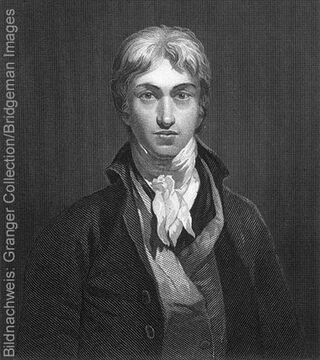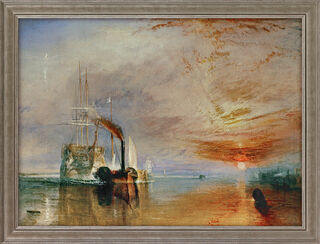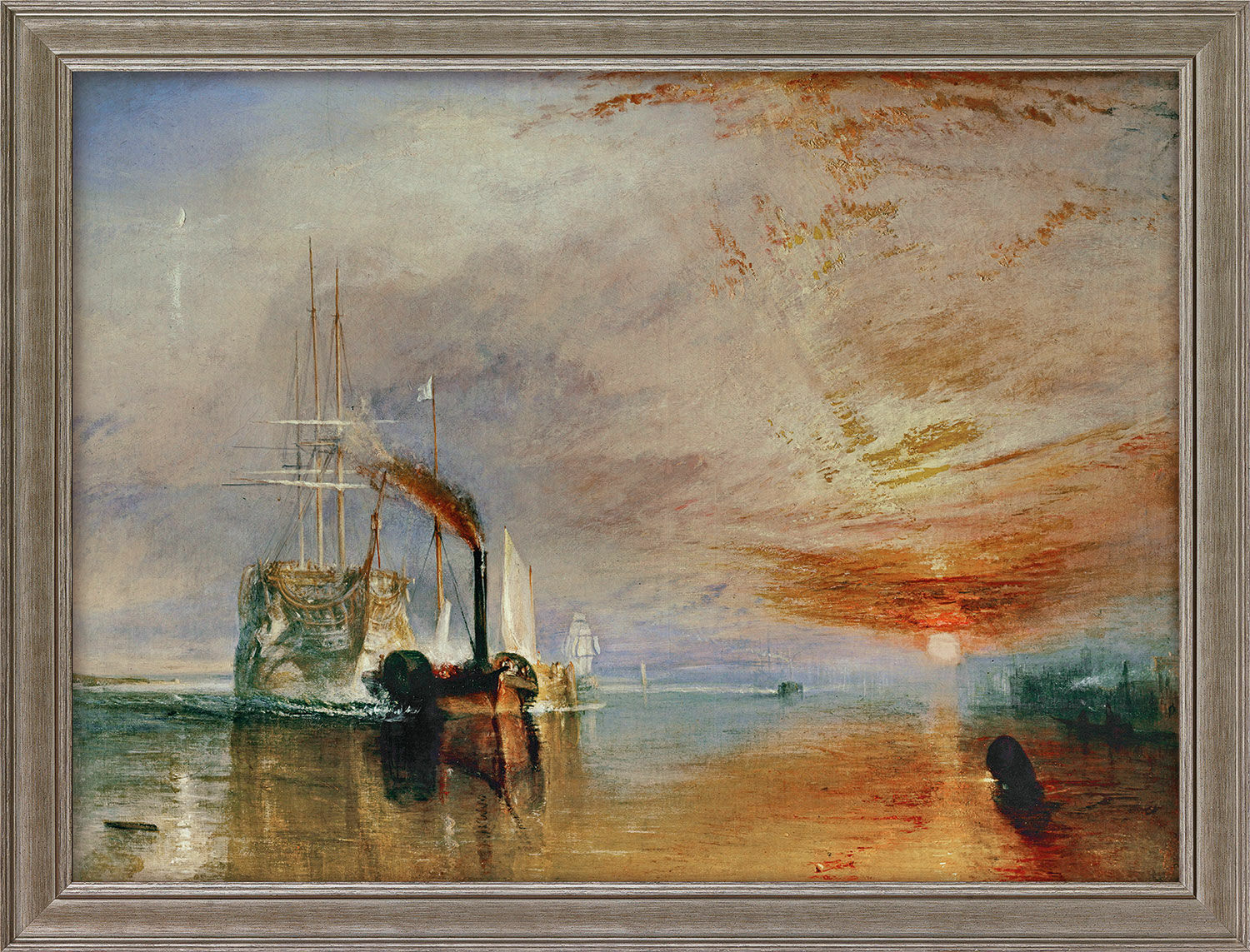Picture "The Fighting Temeraire" (1839), framed


Picture "The Fighting Temeraire" (1839), framed
Quick info
ars mundi Exclusive Edition | limited, 980 copies | numbered | certificate | reproduction, Giclée print on canvas | on stretcher frame | framed | size 64 x 84 cm (h/w)
Detailed description
Picture "The Fighting Temeraire" (1839), framed
This is how the glory of the world fades: The HMS Temeraire was a 98-gun ship used during the famous Battle of Trafalgar. In this painting, Turner depicts the HMS Temeraire being towed up by a steam tug towards the scrapyard in the light of a sun sinking in exploding red tones.
Original: 1838/39, oil on canvas, 90.7 x 121.6 cm, National Gallery, London.
Fine Art Giclée edition transferred directly onto artist's canvas and stretched on a stretcher frame. Limited edition 980, numbered, with certificate. Framed in a handmade, silver-coloured solid wood frame. Size 64 x 84 cm (h/w). ars mundi Exclusive Edition.
Frame configurator
Customised picture frame

Frame configurator
Customised picture frame







About William Turner
1775-1851
English oil and watercolour painter. He mainly painted landscapes, history paintings and seascapes.
Already at a young age, William Turner achieved the highest technical perfection and was appointed to the Royal Academy as one of Britain's most important artists; nine years later he was one of its members.
Experiments with new techniques and an intensive study of Goethe's theory of colour, together with extensive travels, sparked an important change in Turner's style. He courageously abandoned the established rules of pictorial tradition and Object Realism and devoted himself intensively to the effects of light and movement.
Turner earned much criticism for his completely new type of painting. But his precise observation of nature and the flowing light in the paintings of the great Romantic paved the way for the Impressionists and the development of modern painting.
The majority of his works are exhibited in the Tate Gallery in London.
Graphic or sculpture edition that was initiated by ars mundi and is available only at ars mundi or at distribution partners licensed by ars mundi.
Giclée = derived from the French verb gicler "to squirt, spurt".
The giclée method is a digital printing process. It is a high-resolution, large-format printout on an inkjet printer with special different-coloured dye- or pigment-based inks (usually six to twelve). The colours are fade-proof, i.e. resistant to harmful UV light. They have a high richness of nuance, contrast and saturation.
The giclée process is suitable for art canvases, handmade and watercolour paper as well as for silk.
An attitude that spread from literature and philosophy into the visual arts, established in about 1800 but failed to produce its own style in visual arts.
The art of Romanticism was determined by the content of the awareness of life and the sensations triggered by it. Inwardness and feelings, dream and fantasy, world and nature, the power of mythical and the striving towards infinity became central themes. The actual realm of Romanticism lies in painting and drawing. Landscape, in particular, came to the fore as a recurring theme: man and nature were set in relation to each other and moods were reflected. Alongside the new feeling for nature, there was a renewal of religious attitudes and a return to the past, tradition, history, old legends, fairy tales, as well as to the art of old masters and epochs. Especially in the case of Germany, this was strongly national-oriented art.
Main representatives in Germany include C.D. Friedrich, P.O. Runge, J.A. Koch, M. v. Schwind, and also the Nazarene group of artists. French Romanticism, which was characterised by other trends than the German, is represented mainly by the art of Delacroix.
Romanticism lasted until around 1830.






